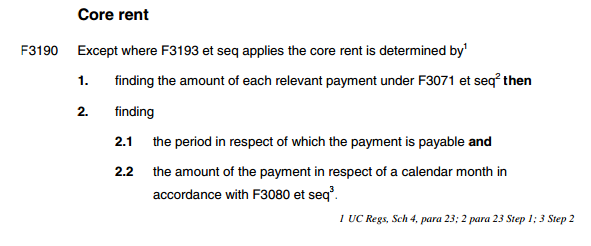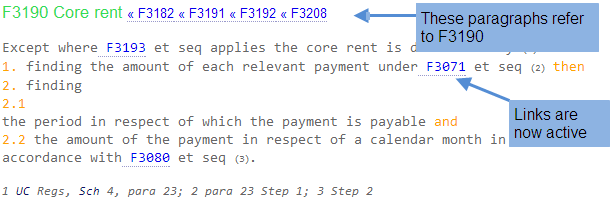The citizen’s income is an unconditional non-means-tested allowance paid individually to all citizens.
On the recommendation of Anthony Painter at the RSA, I took a look at a citizen’s income scheme proposed by the Citizen’s Income Trust (CIT). Their scheme covers most basic needs, but not housing costs or benefits paid because of disability. The CIT includes indicative costings, and claims that the scheme is broadly cost-neutral once tax changes are taken into account.
Housing costs are excluded because of their variability: a national flat-rate citizen’s income sufficient to support private-sector London rents would be far in excess of that needed elsewhere.
A key objective of the CIT scheme (as with most citizen’s income schemes) is to eliminate or greatly ease the poverty trap created by the sharp withdrawal of means-tested benefits as other income rises. The scheme I looked at does not meet this objective.
The CIT assumes that housing benefit and council tax support remain in situ – pretty much as they were in 2012 before the recent cuts. Both are means-tested. In broad terms, where income exceeds a claim specific amount, housing benefit is reduced by 65p for each additional pound of net income (gross income less tax/NI). Typically, 20p or more of council tax support is also withdrawn for each additional pound of net income.
Suppose I am a tenant responsible for rent and council tax. I have my citizen’s income, intended to cover my basic needs other than housing. I then receive means-tested housing benefit and council tax benefit on top. Because I don’t have any other income, my housing and council tax are covered in full.
I then get a part time job and my income goes up by £100 gross on which I pay £32 tax (employee’s national insurance is bundled into income tax in the CIT scheme, personal allowances are abolished.) This leaves me with £68.00. Assuming my housing benefit and council tax support are calculated as they were in 2012, my housing benefit is then reduced by 65% of this, i.e. by £44.20, and my council tax support by 20%, £13.60. Total deductions are £89.80, making me just £10.20 better off. This compares rather poorly with universal credit (plus the separate council tax reduction), and is little different to the pre-universal credit schemes.
What would it take for the CIT scheme to eliminate the poverty trap?
You would need to pay everybody’s rent and council tax in full. Merely retaining housing and council tax support is insufficient.
Alternatively, fix the housing system so that everyone has access to well-maintained, secure and affordable housing.
Winners and losers
People with inherited property and modest trust funds would do well from the CIT scheme. Lone parent tenants in need of childcare would do very badly. Unlike the current system, the CIT scheme excludes:
- support for childcare costs.
- support for owner-occupier housing costs
- additional amounts in means-tested benefits paid to people with disabilities or caring responsibilities
So if a CI scheme doesn’t spring the poverty trap, what’s the point?
Ultimately, the prospect of a decent life for all. But CI schemes conflate several different hopes:
- reduced administrative costs
- low marginal deduction rates (combined impact of lost benefit and increased tax as income rises) CIs are means-tested in practice, it just happens via income tax
- removing couple penalties – all entitlements are individual
- income redistribution (popular on the left)
- payment in lieu of government provided services eg health (popular on the libertarian right)
- removing conditionality (no need to sign on, look for work etc)
Payment in lieu of services appeals on the grounds of maximising personal autonomy, but once services are devolved to the person in this way, it’s much easier for them to be cut – reducing the CI is easier than sacking care workers, just as allowing a private steel company to go bust is easier for the state than eliminating part of a nationalised industry.
Reduced administrative costs are often cited as a major benefit of CI. Although there are savings to made, I suspect they’re commonly exaggerated. Many schemes will bring more people into the tax system. Any scheme which keeps separate housing benefits and benefits for people with disabilities (as in the CIT scheme), will equally keep much of the administrative cost. The Green Party’s CI scheme includes an additional £80.00 for lone parents, rightly acknowledging the additional costs of single parenthood. But adding it to the scheme means that there now has to be a bureaucracy determining the status of single parents – and pairs of single parents who become one family will lose £160 per week.
Removing or significantly reducing conditionality is perhaps the most immediately achievable goal – though it goes against the prevailing establishment view that being poor is a condition deserving of punishment in itself.
Update
Dr Malcom Torry from the CIT has kindly forwarded me some new intermediate CI schemes developed by the trust. These retain much of the existing benefits system – and therefore much of its complexity, but usefully discuss how progress might be made towards a citizen’s income in the short to medium term.

